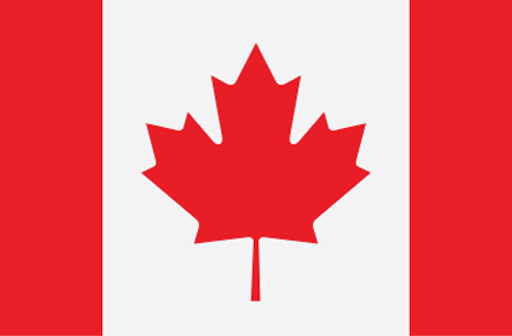How long will social distancing last for?
How long will social distancing last for?
The populace is hopeful that with the ease of the general restrictions that have been in place for several months, that social distancing will also fade out but health experts and officials are predicting that social distancing will be in place for months as some with researchers are making projections that the populace will still need to practice intermittent social distancing at least till 2022.
Everyone across the globe is raising questions about social distancing and how long it will need to be practiced; the hidden question therein is people are wondering if things will get back to normal again and if so, when? These are questions that are quite difficult to provide answers to and making predictions is also quite challenging as there so many factors to put into consideration: such as if infected patients will be immune over time and how long the immunity will last and if the virus' transmission will change with the seasons; several public health experts have set to work to research on situations in which it would safe to lift the social distancing measures.

Of the most notable plans being disseminated recently are: by the Nobel Prize-winning economist Paul Romer and Harvard University's T.H. Chan School of Public Health and the American Enterprise Institute's (AEI) roadmap, whose authors include former FDA commissioner Scott Gottlieb, and the Center for American Progress' (CAP) plan, whose authors include prominent health policy expert and bioethicist Ezekiel Emanuel.
Though each of the research discoveries varies in the details, they all generally profile a three-phase come-back:
First phase
The first phase demands all-embracing social distancing application to flatten the curve to stop the health care system from being overwhelmed
Second phase
At this stage, social distancing measures are still maintained and businesses are allowed to reopen, but restrictions are still placed on large outdoor gatherings and social events. Also at this phase, some kind of communal health system observation to extend screening and keep track of the virus transmission would be done.

Third Phase
In the third phase which it would be quite vital to develop an effective vaccine to avert the viral transmission or medication to treat the Coronavirus. The third Phase is supposed to effectively end social distancing but the difference is that each plan set varied time frame on how to get there and also paints a varied concept of what ‘normal’ would look like when there is a total restriction uplift. Observably, the plans called for an initial lockdown period of different durations.
For example, CAP's plan indicated that widespread stay-at-home restrictions should not be lifted until transmission rates are down to eighteen new cases per one million daily or the level at which South Korea was able to reduce transmission without locking down the community. This plan was printed on 3rd April, it approximated the rate of transmission at the time as seventy-six new cases per one million individuals daily. CAP's plan also approximates at a minimal rate, the stay-at-home regulation should be in effect for at least forty-five days, commencing 5th April, to reach that starting point; however, if the transmission rate is continuously on the high, the lockdown extension will be inevitable.
Meanwhile, AEP's plan suggests that the country waits a fortnight after there has been a consistent balance in the reduction of the number of cases before easing the lockdown. However, there was no definite affirmation on when exactly that would be.
Both drafts also pointed out that arrangement would have to be made in the health division for case tracking and therapeutics on a large- scale before re-opening, which would demand that there is enough supply of personal protective equipment (PPE) for all health care workers and some form of tracking system that would trace and recognize communal transmission of the infection. Besides, the plans affirm that the United States would have to expand the capacity to screen and treat everyone who exhibits symptoms of the Coronavirus before easing the stay-at-home instructions. The number of screening that would be needed to be done differs by plan, but both pointed out that estimating the screening could be hard because many of the products needed to run the screening are in low supply.
Immediately these benchmark is attained, the plans state that the commencement of the easing of the social distancing can be effected. However, both plans state that this must be done in gradual phases. For example, after lifting the stay-at-home orders, the citizenry will be advised to still keep wearing the face mask for a while. A fraction of businesses will be allowed to go back to work; however certain conditions will be set for control in minimizing the number of people who gather together in a place. The final normal activity that will be introduced is public gatherings in places like clubs, venues, bars, and concerts. AEP's plan appeals for a stay on bans on gatherings of more than 50 people till a vaccine or functional treatment is developed; both plans agree and forecast this eventuality is between a year and a year and a half away; though some public health professionals predict that it could be up to two years away.
An infectious-disease epidemiologist at the University of Minnesota, Michael Osterholm communicated his thoughts that people are yet to comprehend that the discovery of a vaccine or treatment for the Coronavirus is going to take a while, like two years. Meanwhile, the government will need to on their toes to be pro-active about an upsurge of the Coronavirus that could occur before then. Current research by experts from Harvard's T.H. Chan School of Public Health made a forecast that attending the up-surge would need fragmentary social distancing procedures through 2022, except a functional vaccine or cure is discovered or hospital capacity is increased. The expert’s computer framework projects the ease of social distancing measures until after 20 weeks would only effectively delay the peak of the epidemic and not manage it.
According to health professionals, the reality is that; it is not possible to ascertain a precise date for when life will return to normalcy or what ‘normal’ might look like without a cure or vaccine.







Leave a comment